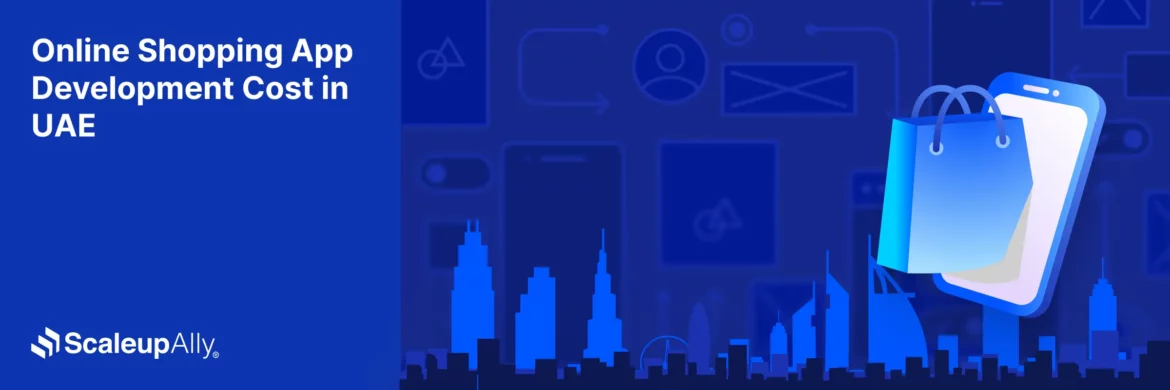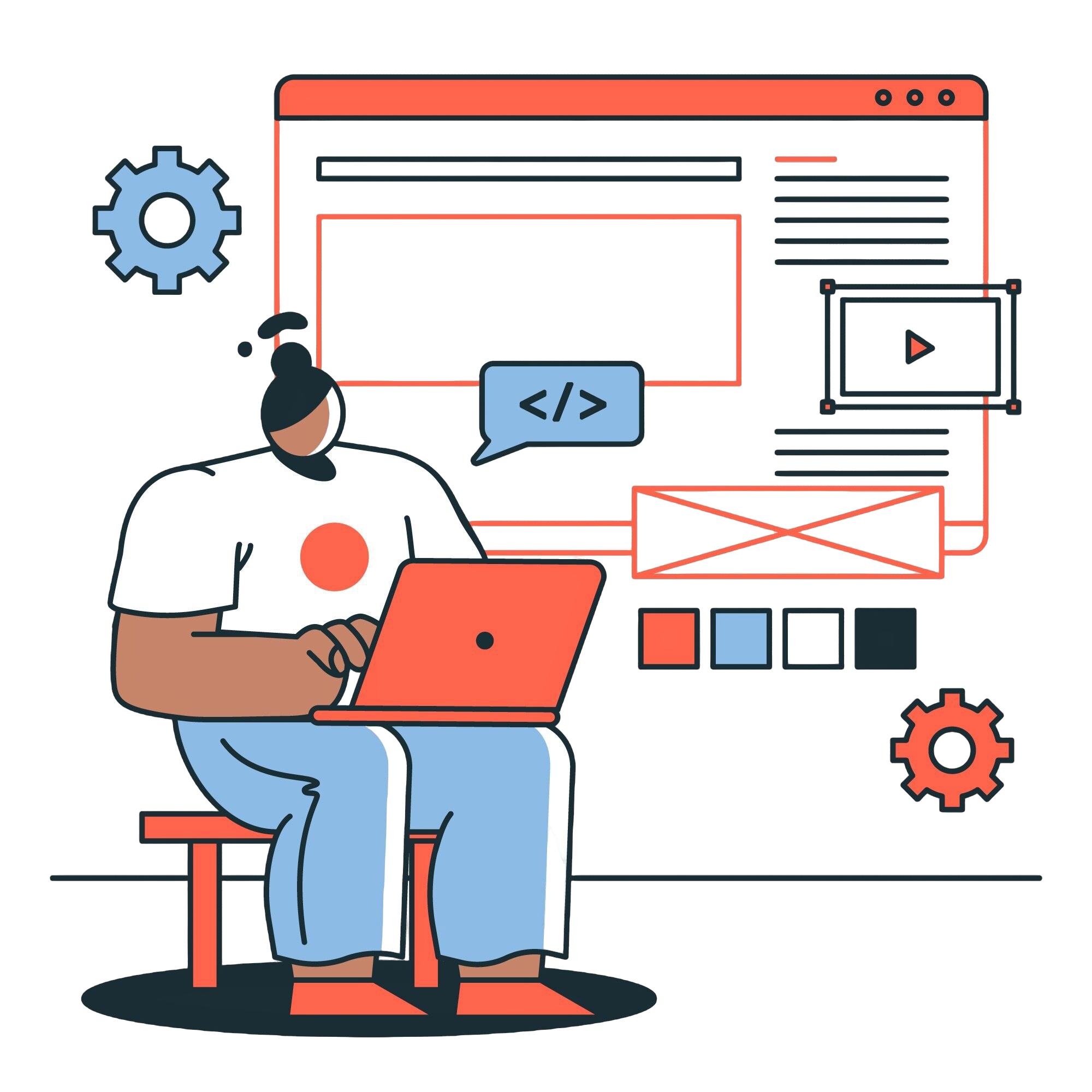
How to Build an On-Demand Delivery App? The Complete Guide
Suprabhat Sen | January 28, 2024 , 11 min read
Table Of Content
Over a decade, the on-demand economy has become increasingly popular. This model, pioneered by companies like Uber and Airbnb, has become one of the most widely used business models, changing how businesses operate and how customers experience services in various industries.
Today, consumers use on-demand delivery services for a wide range of needs, such as getting groceries, delivering flowers, or buying furniture. These services have the potential to transform businesses by meeting customer demands quickly and efficiently.
Looking specifically at food delivery, the market for this type of service is growing and is projected to reach $466 billion by 2027.
If you’re considering building an on-demand delivery app, you’re in the right place. This guide will take you through the process of creating your own on-demand delivery app, from the initial idea to the final product.
Key Takeaways
- Core features of an on-demand delivery app include user profiles, real-time tracking, order notifications, reviews, an admin dashboard, in-app chat, and a driver app for efficient operations.
- Key steps for on demand delivery app development are market research, defining a unique value proposition, selecting a niche, wireframing, choosing a tech stack, iterative development, and robust testing.
- Some of the best practices include: Focus on user-centric design, efficient onboarding, clear communication, and using data analytics for feature optimization and improving user experience.
- A successful app launch requires strategic marketing, partnerships, and continuous iteration based on user feedback and evolving trends.
What is an On-Demand Delivery App?
An on-demand delivery app is a tech tool that makes it easy and quick to deliver goods or services to customers. It’s a modern solution that’s becoming more popular because people want things to be convenient and fast.
Unlike regular delivery services, these apps use technology to connect businesses, service providers, and customers instantly.
Examples of such on-demand delivery apps are Uber Eats, Instacart, and DoorDash.
Step By Step Guide to Build On-Demand Delivery App
Creating an on-demand delivery app needs careful planning and organization. Use this step-by-step guide to turn your concept into a practical and easy-to-use app.
1. Market Research and Analysis
Start by conducting thorough market research to understand the demand, competition, and trends in your chosen niche. Identify your target audience and analyze their preferences. Utilize data-driven insights to shape your app’s features and functionalities.
2. Define Your Unique Value Proposition (UVP)
Clearly articulate what sets your on-demand delivery app apart from the competition. Define your unique selling points and how your app addresses the specific needs and pain points of your target audience.
3. Choose the Right Niche and Services
Determine the specific industry or niche your app will cater to—whether it’s food delivery, grocery delivery, or other goods and services. Define the range of services your app will offer, ensuring they align with your target audience’s needs.
4. Identify Key Features
Outline the essential features your on-demand delivery app will include. This may include user registration, real-time tracking, secure payment options, order history, and a review system. Prioritize features based on their importance to your users.
5. Wireframing and Prototyping
Create wireframes and prototypes to visualize the user interface and flow of your app. This step helps in identifying potential issues early on and ensures a smooth user experience. Consider user feedback during this phase to refine your app’s design.
6. Choose the Right Technology Stack
Select the appropriate technology stack for your app, considering factors like scalability, security, and development speed. Choose a reliable backend framework, a compatible frontend framework, and the right database system. Consider using frameworks and libraries that expedite development.
7. Development
Initiate the development process based on the finalized wireframes and prototypes. Divide the development into sprints, focusing on incremental releases to address any issues promptly. Regularly test the app to ensure each feature functions as intended.
8. Implement Payment Integration
Integrate secure and convenient payment options within your app. Collaborate with trusted payment gateways to facilitate smooth transactions. Ensure compliance with security standards to build trust with users.
9. Incorporate Geolocation Services
Leverage GPS technology to enable real-time tracking of deliveries. Geolocation services enhance transparency and allow users to monitor the progress of their orders. Ensure accuracy and reliability in location tracking.
10. Testing
Conduct thorough testing of your on-demand delivery app. Perform functional, usability, security, and performance testing to identify and rectify any bugs or issues. Gather feedback from beta testing to make necessary improvements.
11. Launch and Marketing
Prepare for the official launch of your on-demand delivery app. Develop a comprehensive marketing strategy to create awareness and attract users. Utilize digital channels, social media, and partnerships to maximize visibility.
12. User Feedback and Iteration
Encourage users to provide feedback on their experience with the app. Use this feedback to make continuous improvements and updates—iterate based on user suggestions and evolving market trends.
Best of luck as you venture into the on-demand delivery app entrepreneurship world! Here’s to your app standing out in the competitive digital market.
Best Practices for On-Demand Delivery App Development
Creating a successful delivery app involves following the best methods to ensure users have a great experience.
Whether you’re making a food delivery app, a grocery delivery app, or something else that people can use right away, these are the most important things to keep in mind as you develop your app.
1. User-Centric Design
Design user interfaces that are intuitive and easy to navigate. Minimize the learning curve for users, ensuring a seamless and enjoyable experience.
Implement feedback loops to gather user insights. Regularly analyze feedback and make iterative improvements based on user suggestions.
2. Efficient Onboarding
Simplify the onboarding process with minimalistic registration steps. Allow users to sign up using social media accounts for convenience.
Communicate the app’s value proposition during onboarding. Clearly outline the benefits users will gain from using your on-demand delivery service.
3. Real-Time Tracking
Invest in accurate geolocation services for real-time tracking. Provide users with transparent and precise information about the status and location of their deliveries.
Implement Estimated Time of Arrival (ETA) notifications to keep users informed about the expected delivery time. This enhances user satisfaction and manages expectations.
4. Clear Communication
Implement push notifications to keep users informed about order status, promotions, and updates. Strike a balance to avoid overloading users with notifications.
Facilitate communication between users and delivery personnel within the app. Enable users to track the delivery progress and contact the delivery person if needed.
Key Features of an On-Demand Delivery App
To make a successful on-demand delivery app, you need to include important features that meet user needs, make things efficient, and improve the overall user experience. Here are the main features you should include in your on-demand delivery app:
1. User Registration and Profiles
Allow users to create accounts with ease, using email or social media credentials. Enable them to manage personal details, delivery preferences, and payment information within their profiles.
2. Service Selection and Ordering
Provide a straightforward and intuitive interface for users to browse services or products, select items, and place orders. Include high-quality images, detailed descriptions, and pricing information to aid decision-making.
3. Real-Time Tracking
Implement GPS technology to enable real-time tracking of orders. Offer users the ability to monitor the location and status of their deliveries, providing transparency and enhancing trust.
4. Order Confirmation and Notifications
Keep users informed with order confirmation messages and real-time notifications. Communicate estimated delivery times and provide updates on the status of their orders.
5. Reviews and Ratings
Incorporate a review and rating system to allow users to share feedback on the services they receive. This feature not only builds trust but also aids in quality control.
6. Admin Dashboard
Provide an intuitive dashboard for administrators to manage and monitor orders, track deliveries, and oversee overall app performance. Admins should have the capability to view and manage user data and feedback.
8. Driver or Delivery Person App
If applicable, create a dedicated app for delivery personnel. This app should include features for order acceptance, route optimization, and communication with users.
9. In-App Chat or Support
Facilitate communication between users, delivery personnel, and customer support through an in-app chat or messaging system. This enhances the overall user experience and allows quick issue resolution.
10. Search and Filters
Enhance the user experience with search functionality and filters. Users should be able to quickly find the services or products they’re looking for, improving overall app usability.
11. User Analytics
Integrate analytics tools to gather insights into user behavior, preferences, and app performance. Utilize this data to make informed decisions, improve features, and enhance the overall app experience.
12. Push Notifications
Utilize push notifications to keep users engaged and informed. Notify them about order updates, promotions, and relevant information to maintain ongoing communication.
How can ScaleupAlly help?
ScaleupAlly offers strategic planning to align the development process with your business goals and target audience, creating tailored solutions for various niches like food or grocery delivery. With a focus on user-centric design, ScaleupAlly ensures an intuitive and visually appealing interface.
Post-launch, ScaleupAlly provides ongoing support and maintenance, ensuring your on-demand delivery app stays optimized and secure, allowing you to focus on business growth.
Conclusion
Congratulations on completing our guide for creating an on-demand delivery app! You’ve successfully tackled the challenges of app development by using a thoughtful, data-focused approach from start to finish.
Keep in mind that the key to your app’s success is in combining technology, user-friendly design, and a dedication to always getting better. Stay up-to-date, be flexible, and above all, keep in touch with your users.
Best of luck as you venture into the on-demand delivery app entrepreneurship world! Here’s to your app standing out in the competitive digital market.
At ScaleupAlly, we deliver expert restaurant IT services and solutions designed to elevate your food business to new heights.
Frequently Asked Questions
Q: What strategies can I employ to retain users and encourage repeat business?
Retaining users involves providing a seamless and rewarding experience. Implement a loyalty program, offer exclusive discounts, and actively seek and respond to user feedback. Personalize user experiences and consistently deliver reliable and timely service.
Q: How can I handle peak times and ensure scalability during high demand?
Handling peak times requires a scalable infrastructure. Collaborate with cloud service providers, employ load balancing techniques, and continuously monitor server performance. Implement surge pricing to manage demand during peak periods effectively.
Q: How do I stay informed about technological advancements in on-demand delivery app development?
Stay informed about technological advancements by actively participating in relevant forums, attending industry conferences, and subscribing to newsletters from reputable tech publications. Engage with other app developers, and continuously update your knowledge to stay ahead of industry trends.
Related Blogs

Top 20 Emerging Technologies of 2026
Discover the top 20 emerging technologies of 2026. Explore which innovations are driving change across healthcare, finance, manufacturing, and other crucial industries.
ScaleupAlly Team
Dec 16 ,
9 min read

Online Shopping App Development Cost in UAE | Pricing & Factors Explained
Understand UAE online shopping app development costs in 2025 with pricing ranges, influencing factors, hidden fees, timeframes, and expert savings tips.
Suprabhat Sen
Nov 29 ,
13 min read

Software Development Timeline: Phases, Duration & Estimation Guide
Understand the software development timeline with phase durations, key factors, hidden delays, and practical methods to estimate project time.
Suprabhat Sen
Nov 29 ,
16 min read



